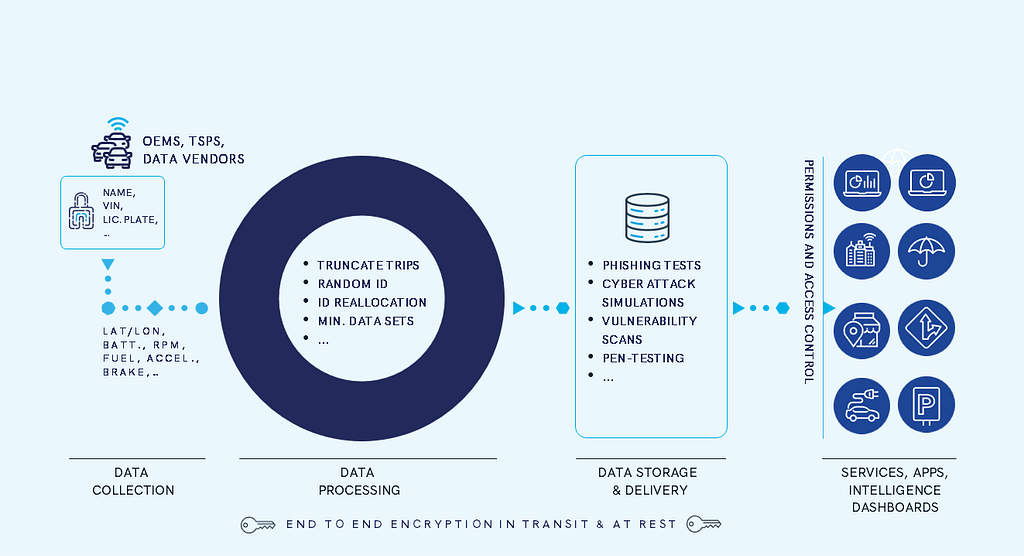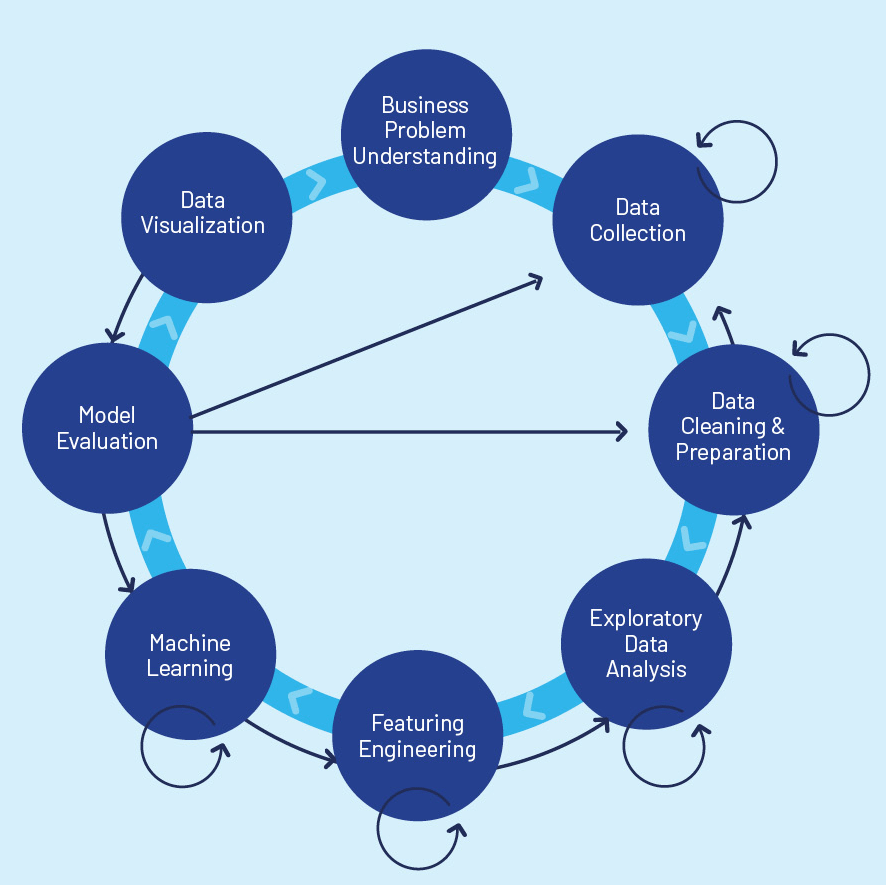The transportation industry is undergoing a rapid transformation—one powered by technology and driven by data. Almost every new car sold today is connected to the internet, almost every mobility-as-a-service (MaaS) provider uses data to power their business, and even...
The transportation industry is undergoing a rapid transformation—one powered by technology and driven by data. Almost every new car sold today is connected to the internet, almost every mobility-as-a-service (MaaS) provider uses data to power their business, and even the transportation infrastructure around us incorporates internet-connected sensors, all collecting and sending information. This connectivity has significant benefits. The data generated by connected transportation is extremely useful for improving road safety, meeting sustainability goals, supporting vehicle maintenance, and making transportation more accessible and efficient for all. This carries great responsibility over how that data is collected, managed, used and stored.
At Otonomo, our mission is to build the platform to power the mobility economy while maintaining every individual’s fundamental right to privacy. For the mobility economy to thrive, data must be allowed to flow, but it must also be treated with the utmost respect. The Otonomo Smart Mobility Data Platform was architected with privacy and security by design, providing secure data management using patented data blurring technology. This technique ensures that data is de-identified at the source, and that direct identifiers or vehicle-specific details are never exposed without explicit consent.
Read on to learn how Otonomo sources, processes and protects data to create a more secure and responsible framework for the future of transportation thereby making mobility more accessible, equitable, sustainable and safe.
How is Connected Vehicle Data Protected?
Data blurring is a multi-layered process, involving multiple protection mechanisms designed to remove identifying data at its origin. Unless explicit, detailed consent is given in specific use cases, such as with corporate vehicle fleets, the data is de-identified from the get-go. Otonomo does not collect driver-specific data.
Step 1: How we source the data – Otonomo receives data from car manufacturers (OEMs), wholesale data vendors, data telematics service providers and other sources. Personal identifiers, such as names, license plate numbers, government issued IDs, telephone numbers or addresses are not collected, and Vehicle Identification Numbers (VINs) are replaced at the source with indecipherable IDs that are reallocated dynamically over time. Otonomo’s process gathers vehicle-generated data and telemetry, such as latitude/longitude location coordinates, which we reverse geocode to determine country and city, RPM, battery voltage, fuel level, acceleration, braking, etc.Step 2: How we process the data – Once the data enters Otonomo’s Smart Mobility Data Platform, additional measures are taken to ensure privacy is maintained. These can include truncating the beginning and end points of trips; providing different random samples of the data sets with each query so the same vehicle may or may not be included in the data; setting thresholds that prevent pinpointing specific vehicles, such as a minimum data set size that makes it nearly impossible to filter out a specific vehicle; and many more methods that ensure privacy is protected.Step 3: How we protect the data – Otonomo’s data blurring processes and techniques are complemented by a comprehensive permissions and access control system. This ensures that data consumers can only access the data they need, provided they have the required permissions. This is bolstered by comprehensive security measures employed to protect the data itself, including: end-to-end data encryption throughout its lifecycle; sophisticated, built-in security against external threats; constant phishing tests and simulation drills, a monthly external vulnerability scan, a public bug bounty program, and a yearly penetration test by a certified, 3rd party vendor. All of these are measures through which Otonomo maintains ISO 27001 certification for information security.
What are the use cases for connected vehicle data?
The data made available securely through the Otonomo Smart Mobility Data Platform is used to enable a wide range of diverse use cases that are predominantly focused on improving transportation to make our roads safer, reduce emissions, and improve traffic flow. Examples include:
Insights and data are used in urban planning to meet emission targets, facilitate modal shifts, manage traffic, and empower cities in their transportation decision-making processes.Municipalities use Otonomo to detect high-risk areas in road infrastructure before they become critical, and to measure the success of maintenance and changes in road architecture as soon as they are implemented.Near real-time data is used to monitor for and report on bad weather and road hazards.Data insights are used to plan and simulate transportation needs when expanding urban spaces or designing new transportation infrastructure.For more examples of how Otonomo data is used, read some of our customer and partner use cases.
Creating a safer, more sustainable and affordable future of transportation hinges on the ability to unlock the power of mobility insights. Data is a vital part of that journey, and as such, it must be treated in a way that respects driver and user privacy, so that everyone can truly benefit from connected transportation. Otonomo’s commitment to data privacy is unequivocal, and we are committed to meeting and exceeding standard industry practices to ensure it is protected.
The post How Otonomo Keeps Connected Vehicle Data Private and Secure appeared first on Otonomo.















